Contents
- India’s agriculture policy dilemma
- Air pollution cuts Indians’ life expectancy
- Indian Navy deepens watch to check China ambitions
- 74% FDI in defence Notification to come
- HK extradition pacts with Canada, Australia, U.K.
- European Union to restrict exports to Hong Kong
INDIA’S AGRICULTURE POLICY DILEMMA
Focus: GS-III Agriculture, Indian Economy
Why in news?
Reserve Bank of India Governor spoke about five dynamic shifts which are underway in the Indian economy in which one of the five themes in the speech was “fortunes shifting in favour of the farm sector” giving a policy direction for the future.
Click Here to read more about the 5 Shifts given by RBI Governor
Introduction
Even though it contributes less than 15% of the GDP, agriculture continues to provide livelihood to more than 40% of the country’s workers. This makes it critical for economic growth.
Favourable terms of trade along with reasonable food prices
- Terms of trade will be in favour of agriculture if prices of agricultural goods are rising at a faster pace than that of non-agricultural goods which need not be consistent with reasonable food prices for consumers.
- The data released by agriculture ministry – agricultural versus non-agricultural sectors and farmers versus non-farmers – shows that both these indices were rising in the last decade and have stagnated or fallen since.
- This is also the period when food price inflation growth has moderated.
- Food inflation shared the upward trajectory of terms of trade for agriculture when the latter was rising.
- This suggests that maintaining terms of trade in favour of agriculture and ensuring reasonable food prices for consumers might not be compatible.
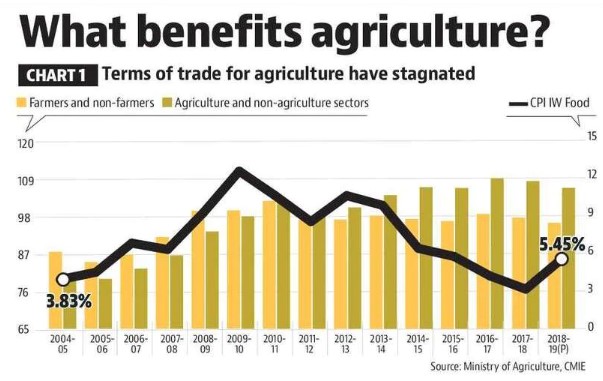
Doing away with price support incentives
- The policy of government procurement at Minimum Support Prices (MSP) has been a key pillar of India’s food security.
- Guaranteed remunerative prices have encouraged farmers to grow more rice and wheat.
- Government’s food stocks, which are built through MSP procurement, come in handy during periods of crisis such as the current one.
Issues with MSP
- The policy has created problems regarding ecologically unsustainable farming practices in India’s original green revolution belt.
- The policy has also created a regional imbalance.
According to latest procurement data from Food Corporation of India -2018-19 for rice and 2019-20 for wheat — almost 50% of total procurement was from the states of Punjab and Haryana.
These problems notwithstanding, the share of procurement in total rice and wheat production has been increasing continuously. Any sudden withdrawal of this policy is bound to create a huge disruption and possible disincentive for production.
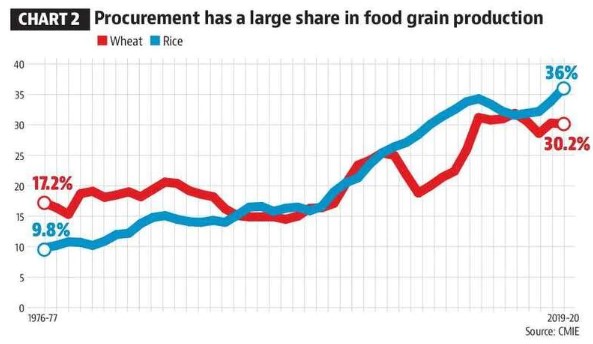
Surplus theory in Indian agriculture
The argument that surplus management has become a major challenge in Indian agriculture, logically speaking, implies that agricultural production needs to be brought down which may not be a desirable solution, especially when the policy objective is to double farmers’ incomes.
The anecdotal evidence of crash in prices with excess production may have 2 factors causing it:
- The first is the question of boosting food demand in India, which is still low, compared to international standards.
- The second is what is referred to as the cobweb model effect. This pertains to production decisions based on limited information leading to wild swings in prices every year. (If onion prices crash in one of the years, farmers sow lower quantities, leading to a surge in prices in the next season.)
The only way to break this is to improve dissemination of information regarding climatic conditions to farmers and make sure that the government does not create additional distortions in food markets.
The Import Export factor
- Resorting to imports on the pretext of controlling food inflation to prevent any spike in prices is an example of this kind of behaviour.
- Exports may provide a way out, but increasing agricultural exports may not be possible in the near future.
- Agriculture in developed countries is heavily subsidized, which reduces export competitiveness of third world exports.
-Source: Hindustan Times
AIR POLLUTION CUTS INDIANS’ LIFE EXPECTANCY
Focus: GS-III Environment and Ecology, Prelims
Why in news?
Pollution levels in India reduces 5.2 years from the life expectancy of the average Indian according to an assessment by the Energy Policy Institute at the University of Chicago.
Assessment Highlights
- India is the second most-polluted country globally after Bangladesh, while Nepal, Singapore and Pakistan are the other top countries with dirty air.
- According to the AQLI (Air Quality Life Index) India’s yearly average particulate pollution concentration of 63.2 ug/m3 in 2018 reduced life expectancy of the average Indian by 5.2 years.
- The life expectancy lost in 2016 was 6.1 years when the particulate pollution was at 71ug/m3.
- So, as the particulate pollution which is linked to diseases affecting the lungs and heart reduced from 2016 to 2018, the life expectancy increased improving the situation.
- Pollution most acutely hits people living in the Indo-Gangetic plains.
- Lucknow is the most polluted district in the country followed by 13 other districts, all in Uttar Pradesh.
- The National Capital Territory of Delhi is the 15th most-polluted region in the country.
- China, however, stands out as a success story as per the data. Singapore, China and India were the three most polluted countries in 1998 but by 2018 China improved to being only the seventh most polluted and had improved its life expectancy by 1.3 years. Singapore has also improved.
- A quarter of India’s population is exposed to air pollution concentrations not recorded in any other country, with 248 million people in north India on track to lose more than 8 years of life expectancy if the same pollution levels persist.
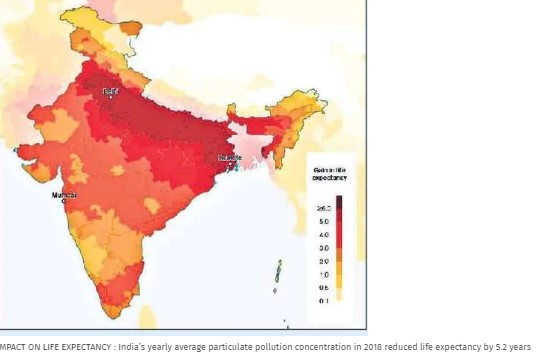
Suggestions in the assessment
The AQLI tells citizens and policymakers how particulate pollution is affecting them and their communities and can be used to measure the benefits of policies to reduce pollution.
No shot in the arm will alleviate air pollution and the solution lies in robust public policy.
-Source: Hindustan Times
INDIAN NAVY DEEPENS WATCH TO CHECK CHINA AMBITIONS
Focus: GS-III Internal Security Challenges, GS-I Geography
Why in news?
The Indian Navy has stepped up surveillance and activities in the Indian Ocean Region (IOR), which, it believes, China will “inevitably” try to enter in its quest to become a global power, just as it has laid claim to large portions of the disputed South China Sea.
Details and developments
- It is to deal with this scenario of China trying to enter IOR that India reached out to neighbours in IOR — Maldives, Mauritius, Seychelles and Madagascar, to prevent China from expanding its footprint in the region by creating more bases — and like-minded navies, such as those of the United States and Japan
- Chinese are opening multiple routes to the Indian Ocean to overcome the Malacca Dilemma (China’s strategic weakness).
Malacca Dilemma
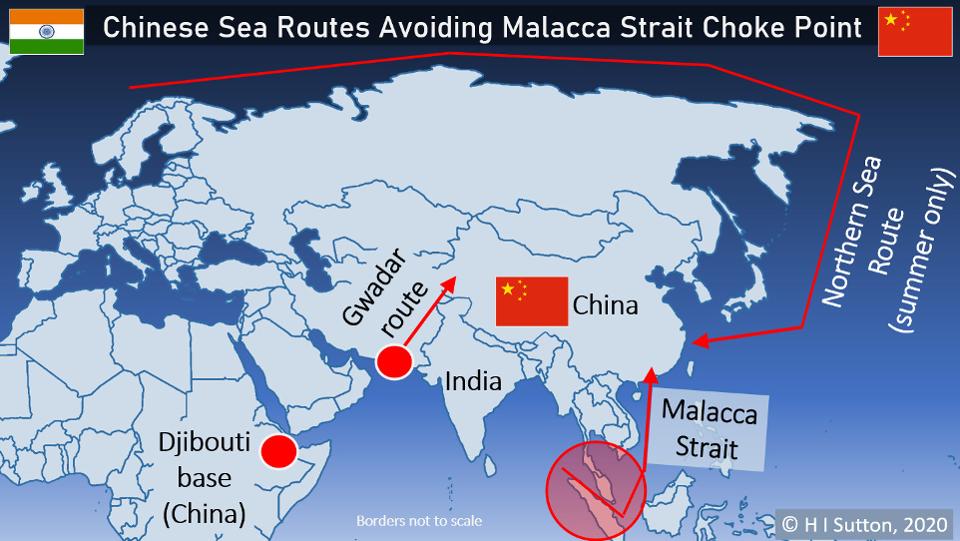
- The Malacca Dilemma refers to China’s apprehension of major naval powers controlling the Malacca Strait between Malaysia and Indonesia and interdicting vital supply lines.
- A significant volume (more than 80%) of China’s oil imports pass through the strait connecting the Indian Ocean and the South China Sea.
The multiple routes that China could be looking at to enter the Indian Ocean are further south of Malacca and include the Sunda, Lombok, Ombai and Wetar straits.
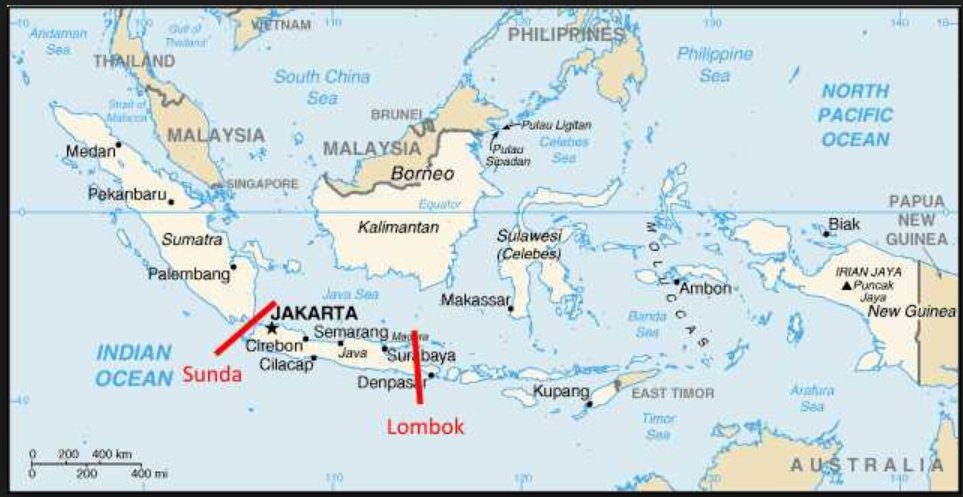
Recently in news:
- The Indian navy has conducted joint drills with a US Navy carrier strike group, led by USS Nimitz, and Indian and Japanese warships have carried out exercises in the Indian Ocean, against the backdrop of the India-China border standoff in Ladakh.
- The stage is also set for Australia to be part of the next Malabar naval exercise conducted by India with the US and Japan.
- From carrying out naval drills with like-minded countries to reaching out to states in the Indian Ocean region, the Indian Navy is focusing on checking China’s rising ambitions in the region and sending out a strong message that Beijing’s power play in South China Sea cannot be replicated in the Indian Ocean.
- China’s step-by-step inroads into “territorialising” the South China Sea find echoes in some parts of IOR, not by trumped up claims because that would be blatant neo-colonialism but with more sophistication.
- Indian warships are deployed from as far as the Persian Gulf to the Malacca strait and northern Bay of Bengal to the southeast coast of Africa.
Click Here to read more about India joining Indian Ocean Commission as an observer
Click Here to read more about the U.S. India Naval Exercise
-Source: Hindustan Times
74% FDI IN DEFENCE NOTIFICATION TO COME
Focus: GS-III Indian Economy
Why in news?
- The government is going to come out with a decision on 74% Foreign Direct Investment (FDI) in defence and a notification is bound to be released soon.
- The second draft of the Defence Procurement Procedure (DPP) 2020, now renamed as the Defence Acquisition Procedure (DAP) 2020, was put out in public domain for comments from stakeholders and public.
Background to the build up
- In May 2020, the government announced a series of measures to promote domestic defence manufacturing as part of the Fourth tranche of the Aatmanirbhar Bharat Abhiyan package.
- These include a negative import list, separate budgetary allocation for domestic procurements, indigenisation of spares and components and raising the FDI cap through automatic route from 49% to 74%.
- Taking of the indigenous defence manufacturing space Indian manufacturers did exceedingly well when it came to exports.
- However, when it came to overall defence manufacturing, the major share was with the public sector, which accounted for about $8bn and the private sector did around $2bn.
- The increase in exports by the private sector comes as several major defence companies like Lockheed Martin, Boeing, Thales and Dassault Aviation are increasingly sourcing components from India for their global supply chains.
State of Imports and Exports in the Defence sector
According to a report released by Stockholm International Peace Research Institute (SIPRI) for the period between 2009-13 and 2014-18, Indian defence imports fell even as exports increased. This is good for a nation that has had the record of being one of the biggest importers of Defence equipment.
2 Factors responsible for this shift
- ‘Make in India’ initiative, as part of which a number of components from Indian private and public sector enterprises have been prioritised by the government.
- Extraneous factors in the form of delays in supplying equipment by vendors and the outright cancellation of contracts by the Indian government or at least a diminution of existing contracts.
Explaining falling imports
Growing indigenization is not the sole reason for falling imports. It is also because of the cancellation of some big-ticket items
- India cancelled the India-Russia joint venture for the development of the advanced Su-57 stealth Fifth Generation Fighter Aircraft (FGFA) in 2018 due to delays and not having the actual “5th gen” capabilities
- In 2015, we also reduced the size of the original acquisition of 126 Rafale Medium Multi-Role Combat Aircraft (MMRCA) from Dassault to 36 aircraft
- Delays in the supplies of T-90 battle tanks, and Su-30 combat aircraft from Russia and submarines from France, in 2009-13 and 2014-18, also depressed imports.
Export trends
The trends look positive on the export front. Between 2012 and 2019, Indian defence exports, both Public and private, have seen a surge
The sharp rise in defence export products can be attributed to the measures introduced by Government
- In 2014, the government delisted or removed several products that were restricted from exports.
- It dispensed with the erstwhile No Objection Certificate (NOC) under the DPP restricting exports of aerospace products, several dual-use items and did away with two-thirds of all products under these heads.
- Small naval crafts account for the bulk of India’s major defence exports. However, export of ammunition and arms remain low.
-Source: The Hindu
HK EXTRADITION PACTS WITH CANADA, AUSTRALIA, U.K.
Focus: GS-II International relations
Why in news?
China announced the suspension of Hong Kong’s extradition treaties with Canada, Australia and Britain in a tit-for-tat move following similar decisions by those countries over a controversial new security law.
Details
- Western nations have angered Beijing over their responses to the law imposed on Hong Kong which they see as an erosion of the civil liberties and human rights the city has enjoyed since its handover from Britain in 1997.
- Canada, Britain and Australia are part of the “Five Eyes” intelligence alliance. The other members are New Zealand, which suspended its extradition treaty with Hong Kong earlier on Tuesday, and the United States, which has signalled it is preparing to do the same.
- China has accused the countries of interfering in its internal affairs and defended the security law as crucial to restore order in Hong Kong following a wave of pro-democracy protests marred by violence.
- China accused the countries of having used the national security law as “an excuse to unilaterally announce the suspension of extradition treaties” with Hong Kong.
- London and Canberra have also angered Beijing by offering pathways to citizenship or residency to Hong Kong citizens looking to leave because of the new law.
Background: Hong Kong Security Law and Impact
- China on introduced the draft of a controversial national security law in Hong Kong in its parliament to tighten Beijing’s control over Hong Kong, the former British colony.
- This could be the biggest blow to the territory’s autonomy and personal freedoms since 1997 when it came under Chinese rule.
- Hong Kong is a Special Administrative Region (SAR) of China.
- It has observed a “one country, two systems” policy since Britain returned sovereignty to China on July 1, 1997, which has allowed it certain freedoms the rest of China does not have.
- The demarche said since the return of Hong Kong to China 23 years ago, the Hong Kong SAR has not acted out its constitutional duty for national security in line with China’s Constitution and the Basic Law.
- While the seven-month-long agitation last year in which millions took part subsided during the coronavirus (COVID-19) crisis from January to April, protesters returned to streets this month, with the pro-autonomy and pro-freedom legislators grappling with the security officials in local legislature protesting against the curbs.
Special Status of Hong Kong
- Since the return to China in 1997, Hong Kong has been governed by the Basic Law, which allows the territory “to enjoy executive, legislative and independent judicial power, including that of final adjudication”, barring matters of defence and foreign affairs.
- The Basic Law requires Hong Kong to pass national security legislation, but past attempts to do so were shelved when the moves triggered wide protests.
- The law will also for the first time allow China’s national security organs to formally operate in Hong Kong. Pa
Click Here to read more about Australia ending Extradition treaty and steps taken by other countries
-Source: The Hindu
EUROPEAN UNION TO RESTRICT EXPORTS TO HONG KONG
Focus: GS-II International relations
Why in news?
The European Union will restrict exports to Hong Kong of equipment that could be used for surveillance and repression after Beijing imposed a controversial new security law.
Details
- The bloc has expressed deep concerned over the new law, which critics say will severely curb Hong Kong’s longstanding autonomy and relative freedom.
- But the EU has struggled to agree a united response to China, with member states deeply divided over whether to stand up to Beijing — a hugely important trading partner — or to try to cooperate with it.
- France and Germany proposed the restriction on so-called “dual use” technology at a meeting of Foreign Ministers.
- Along with the export restriction, the EU will also bring in measures to support the population of the former British colony by making it easier for them to travel to Europe through the granting of visas, scholarships and academic exchanges.
European Union
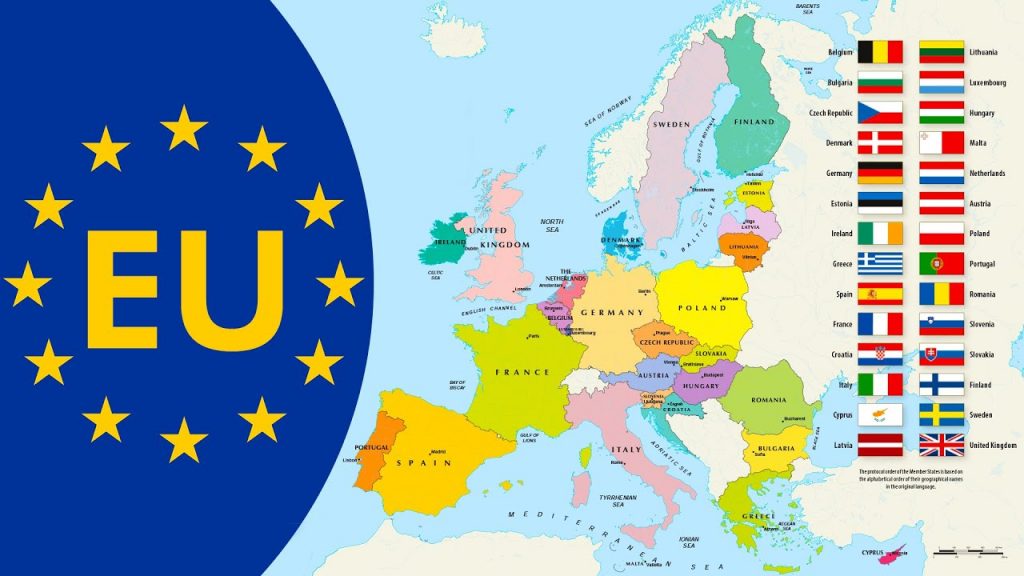
Note: United Kingdom is not a part of the EU now.
- The European Union (EU) is a political and economic union of 27 member states that are located primarily in Europe.
- The EU has developed an internal single market through a standardised system of laws that apply in all member states in those (Only those) matters where members have agreed to act as one.
- A monetary union was established in 1999, coming into full force in 2002, and is composed of 19 EU member states which use the euro currency.
- In January 2020, the United Kingdom became the first member state ever to leave the EU.
-Source: The Hindu




